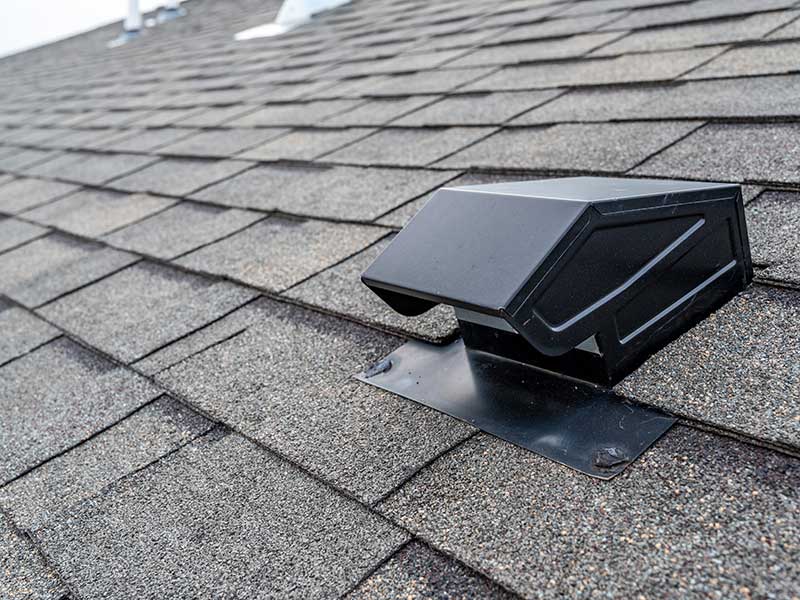Fire-Safe Vents for Proper Attic Ventilation
Roof Vents in San Jose, CA

Vents are an important part of your home’s roof and attic system, especially when it comes to fire safety. In wildfire-prone areas like San Jose, homes should be outfitted with every possible fire-safe vent to ensure proper attic ventilation and fire safety. Westshore Roofing, Inc. offers a variety of fire-safe vents that meet the highest standards in terms of energy efficiency and fire safety. Our expert roofers know how to install these vents properly and provide the highest quality of service.
What Are Vents?
Vents are openings in the roof and attic which provide air circulation to prevent build-up of moisture, heat, and other pollutants from settling inside your home. They also help improve the energy efficiency of your home by allowing stale air to escape and fresh air to enter. Individuals with respiratory or allergy issues benefit from proper ventilation, as it can help remove dust and other allergens from the air.
How Roof Vents Work
Roof vents allow air to move through the attic and out of the home, reducing air pressure and providing fresh outside air in return. This makes it much harder for fires to spread between rooms, as hot embers are unable to travel through the vents. Fire-safe vents protect your home from both external fire hazards, such as wildfires, and internal hazards like kitchen fires.
Vents and Fire Safety
Why are fire-safe vents so essential for your San Jose home? With the right type of vents, your roof can act as a shield against embers and flames that spread during wildfires. In extreme fire conditions, vents can become an exhaust point for heat, smoke, and other gases. If these vents are not properly installed or if they’re made of combustible materials, it can cause significant damage. In addition, fires create embers, which can travel through vents and cause building materials to ignite. Even if your home is primarily made of stone or brick, there are likely wooden components that are vulnerable to fire. Fire-safe vents are essential for reducing the risk of fire damage to your home.
Types of Roof Vents
There are three main types of roof vents: inlet vents, outlet vents, and turbine vents.
- Inlet vents are located under your roof’s eaves and allow air to enter. The best type of fire-safe vent for an inlet vent is one with a soffited eave design, which helps protect it from embers.
- Outlet vents are located near the peak of your roof and allow hot air to escape, keeping the temperature in the attic comfortable. These should be made with non-combustible materials, and their ridges should be rated for wind-resistance to reduce the risk of flying embers.
- Turbine vents use wind power to force air out; they’re especially beneficial in high-moisture areas. If your home has turbine vents, you should be sure to attach a section of 1/8 inch mesh to the vent opening.
Why Attic Ventilation Is Important
Proper attic ventilation helps keep the temperature in your attic comfortable and reduces the risk of moisture buildup. Moisture can cause mold and wood rot, which can weaken and damage your roof system. In addition, proper attic ventilation is essential for fire safety, as it helps reduce the risk of embers and flames entering your home. San Jose is no stranger to the risk of wildfires, and even a small fire can spread to other homes if the right precautions are not taken.
Are Roof Vents Legally Required to Be Fire-Safe?
According to Chapter 7A of the California Building Code, vents should be able to resist the entrance of flames and embers. If they do not, they must be covered by sections of wire mesh screen with 1/4 inch or 1/8-inch openings. The material must be corrosion resistant, noncombustible, and free of plastic components. There are several types of roof vents that have been approved for use by the State Fire Marshal. Our roofers at Westshore Roofing, Inc. can help you determine the best type of vent for your project and ensure that it meets all legal requirements.
Get Fire-Safe Roof Vents in San Jose
If you want to ensure your safety and protect your home during a fire, Westshore Roofing, Inc. can help. We specialize in fire-safe roof vents for proper attic ventilation in San Jose homes and can provide you with top-quality installation services. Contact us today to get your estimate.
